






| Spotted Wolf Spider (Pardosa amentata (Clerck, 1757)) |







|
|
Scientific name: Pardosa amentata (Clerck, 1757) Common name: Spotted Wolf Spider French name: Araignée loup, Pardose Order: Araneae Family: Lycosidae Size: Females: 8mm; Males: 6mm. Biotope: Litter on woodland edges, meadows, gardens. Web: No web. Observation period: March to July. Geographic area: Europe, Asia east to Siberia. North Africa. |
Spiders of the Lycosidae family do not spin webs. They hunt by running and jumping on their preys. You can usually observe them on the ground or on low vegetation. You can recognize them with their big hind eyes looking forward. You can tell apart spiders of the Pardosa genus by the long perpendicular spines on their legs, mainly visible on the hind legs. It is very difficult to tell species apart from a picture. The marks on the upper side of the cephalothorax can give an indication. Pardosa amentata shows a pale longitudinal band on the cephalothorax, rather yellowish at the back and brown at the front. It tapers next to the junction with the abdomen (but I am not quite sure of this fact …). This band is clearly narrowed at mid length. Pardosa amentata is the most common species of the genus. The abdomen, with a very dark ground colour, is covered with pale brown hairs. Based on this, it generally appears rather pale coloured with some black marks. The legs are ringed. You can find the similar species, Pardosa hortensis in dryer habitats, like dry meadows, etc. The pale stripe on the cephalothorax is generally wider than on Pardosa amentata. There may be more than 20 species of the Pardosa genus in France. It is then very difficult to do better than Pardosa sp. when you try to tell the species apart. Females carry their egg-cocoon hooked to their spinners under the abdomen. Then they carry the spiderlings on their back during a few days. |
| [To know more about the Spotted Wolf Spider] [Next picture] [Top] |
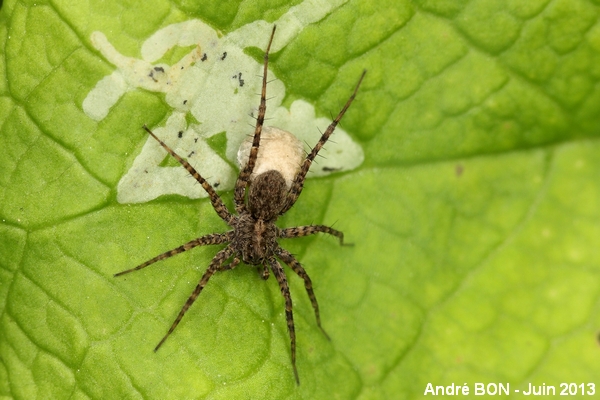
|
You can observe a huge number of these small spiders in my garden. The longitudinal band on the cephalothorax is yellow at the back and narrowed at mid length. I am not sure totally of the identification of this species. I have chosen Pardosa amentata rather than Pardosa hortensis because the longitudinal band on the cephalothorax is rather thin. |
| [To know more about the Spotted Wolf Spider] [Next picture] [Previous picture] [Top] |
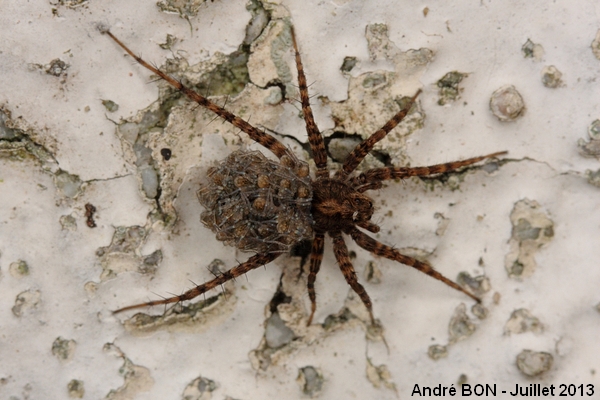
|
Here are the young spiderlings on the back of their mother. |
| [To know more about the Spotted Wolf Spider] [Next picture] [Previous picture] [Top] |
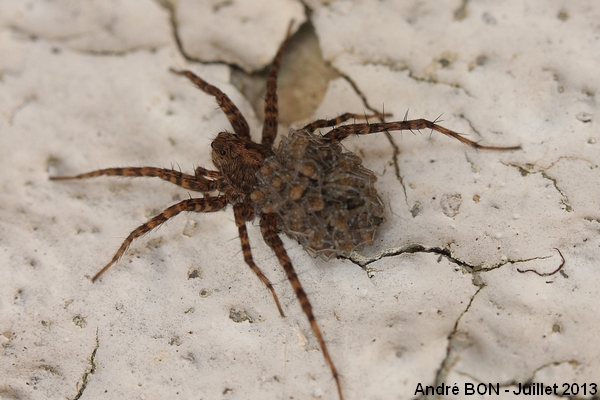
|
The young spiderlings again on the back of their mother. |
| [To know more about the Spotted Wolf Spider] [Next picture] [Previous picture] [Top] |
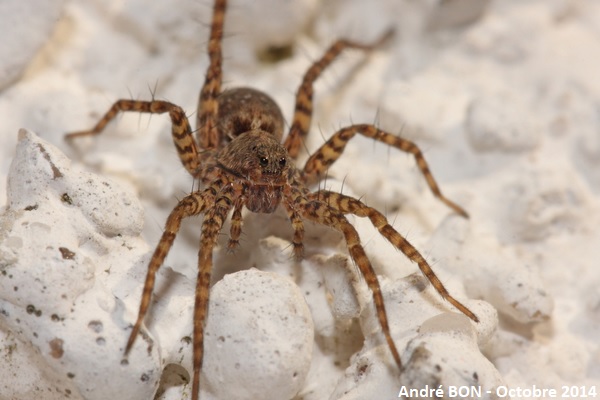
|
You can clearly see the eye arrangement of Lycosidae spiders on this picture. There is a row of four small eyes below two large front eyes with two other medium size eyes on the lateral sides. |
| [To know more about the Spotted Wolf Spider] [Next picture] [Previous picture] [Top] |
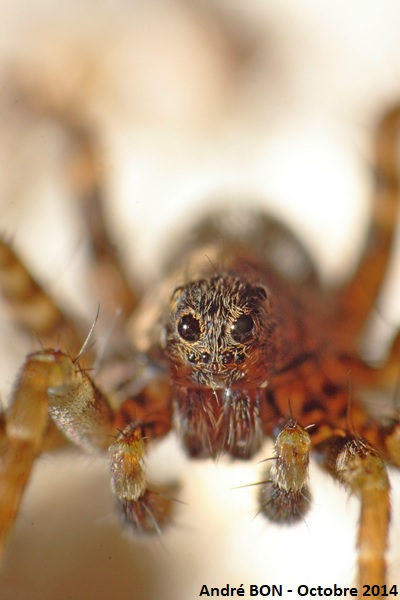
|
I have used reverse-mounted 24mm lenses to get a higher magnification. Though some lighting issues, you can better see the eye arrangement on this picture. |
| [To know more about the Spotted Wolf Spider] [Next picture] [Previous picture] [Top] |

|
These spiders are really numerous all around the house and it is possible to multiply the shots although their great mobility makes the task a little more difficult. |
| [To know more about the Spotted Wolf Spider] [Previous picture] [Top] |
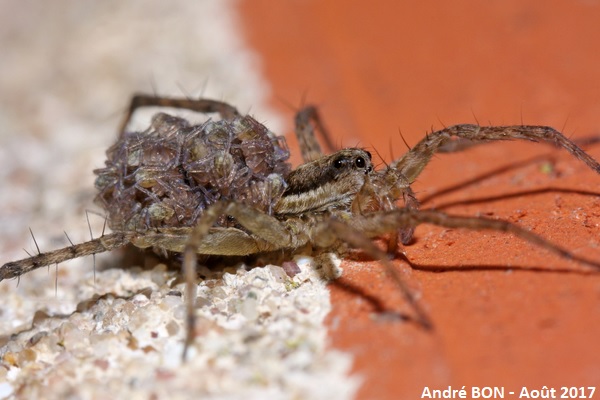
|
It's always a pretty scene to see the carry of these baby spiders on their mommy's back. This view is not enough to identify beyond the genus so we will stick to Pardosa sp. |